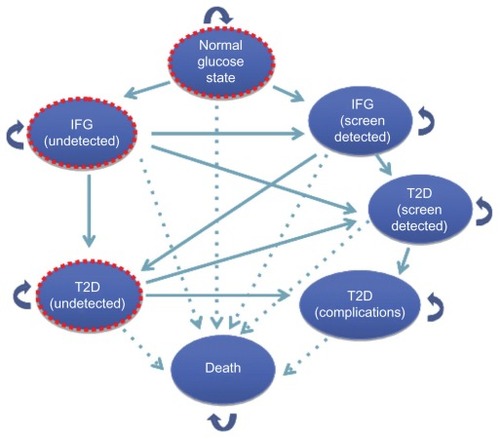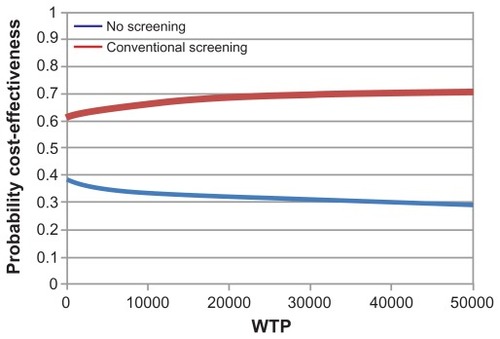Figures & data
Figure 1 Markov state-transition model with the seven proposed health states and possible transitions to be performed once for each screening method.
Abbreviation: IFG, impaired fasting glucose; T2D, type 2 diabetes mellitus.

Figure 2 Markov model simulation for the impact of screening and early detection of impaired fasting glucose tolerance and type 2 diabetes in Canada.
Abbreviations: IFG, impaired fasting glucose; TP, true positive test result; TN, true negative; FN, false negative; FP, false positive; T2DM, type 2 diabetes mellitus.

Table 1 Risk factors for type 2 diabetesTable Footnote1
Table 2 Base-case input values for the Markov modelTable Footnote1
Figure 3 Cost-effectiveness comparison between conventional screening for type 2 diabetes mellitus and no screening.

Table 3 Sensitivity analysis and variation in frequency of screening
Figure 4 Cost-effectiveness acceptability curve for conventional screening for type 2 diabetes compared with “no screening” strategy.
